To facilitate partnership working and interdisciplinary research, we run two Joint Group Leader programmes
This scheme provides a unique opportunity for outstanding candidates to set up their research activity at the Crick whilst being employed by UCL. This enables both institutions to provide the support and facilities to help new Group Leaders establish themselves and their groups within their academic discipline. Staff will be employed by the partner university but will be based in the Crick for up to twelve years, during which time they will be provided with financial support for their research along with access to state of the art technlogy facilities. At the end of their time at the Crick, depending on the terms of the call, appointees will either transfer their main research base to the university with the opportunity of an ongoing Crick affiliation or find a position elsewhere.
Clinician Scientist Group Leaders
A core part of the Crick is the community of medical researchers. Crick clinical group leaders are appointed to a university department, but establish their main research base at the Crick. Once a year the Crick and its partner universities, run a joint recruitment of early-career clinical group leaders. The role is focused on clinician scientists who have completed general and/or specialist training in accordance with the requirements of the GMC or have equivalent national medical registration outside the UK, and who wish to set up an independent research programme at the Crick linked to a related department at Imperial, King’s or UCL. Details of future calls will be advertised on this page.
Physical Sciences Group Leaders
Central to the Crick’s mission is the development of collaborative and multi-disciplinary approaches, encompassing biological, clinical and physical sciences. To support this, scientists within the physical sciences including, chemists, physicists, mathematicians, computer scientist or engineers, who are applying their research to biomedicine and looking to set up an independent research programme linked to a cognate department a one of the partner universities are recruited annually. Details of future calls will be advertised on this page.
- Dr Rupert Beale
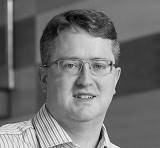
Home department at UCL: Division of Medicine
My lab studies the interactions between infections (particularly influenza) and mammalian cells. We have discovered a pathway that’s triggered by influenza infection that resembles autophagy – a ‘self-eating’ response to starvation. We are trying to work out what this pathway is, what it’s for, and why flu cares about it so much.
- Dr Mike Devine
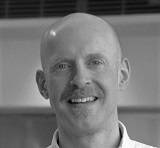
Home department at UCL: Clinical and Movement Neurosciences, UCL Institute of Neurology
We are working out how neuronal synapses are regulated, and how this regulation goes wrong in diseases that affect the brain.
Much of the energy needed to power brain activity is used at synapses, where neurons connect and communicate with each other. An individual neuron contains hundreds of synapses, although not all of them are active at the same time. Active synapses use more energy than resting synapses, and so neurons need a way to manage these changing energy demands.
Mitochondria are small, specialised structures found within nearly all cells of the body, and generate most of the energy used to power cellular activity. They are also mobile, and move within cells to where they are most needed. Unsurprisingly, they frequently localise at synapses.
We have recently shown that, as well as providing energy to support synaptic activity, mitochondria located at synapses can reduce neurotransmission by buffering local Ca2+ signals.
Our aim is to understand why mitochondria have this dual role in regulating synapses, the molecular mechanisms by which this regulation occurs, and how this regulation changes in neurological and psychiatric disease. Through understanding more about this form of synaptic regulation, we hope to open up new ways of treating these conditions.
- Dr James Lee

Home department at UCL: Division of Medicine
We study how tiny differences in our DNA predispose us to autoimmune diseases such as Crohn's disease, rheumatoid arthritis and psoriasis. By uncovering the biological mechanisms involved, we hope to better understand these conditions and find new ways of treating them.
Autoimmune diseases are on the rise, and now affect more than 1 in 10 adults in the UK. These lifelong, incurable illnesses often develop in young people and have huge effects on sufferers' lives, not to mention considerable financial implications for health services.
Almost all autoimmune diseases require better treatments, but the failure rate of drugs entering clinical development is high - in part because we still don't understand these diseases well enough.
Genetic studies to identify changes in our DNA that contribute to autoimmune disorders have been incredibly successful, providing a unique opportunity to better understand these diseases.
Our lab uses a range of experimental tools to uncover the molecular, cellular and biological mechanisms by which genetic variants predispose to human disease – with a particular focus on the sorts of immune cells that drive autoimmunity. By working directly on these immune cells, sourced from patients and healthy volunteers, we aim to both uncover new disease pathways and determine whether these could be targeted to provide better treatments for patients.
- Dr Katharina Schmack
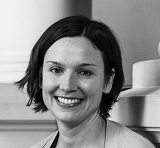
Home department at UCL: Division of Psychiatry
Start date: September 2021
We study the biological mechanisms underlying psychosis. Our goal is to find new ways to treat brain disorders such as schizophrenia.
Psychosis is characterised by disturbances of perception and thought. These are subjective phenomena and have traditionally been difficult to study biologically. Our recent work has established a new approach that combines behavioural observations and computational models to measure psychosis-like phenomena in humans and mice.
We use this cross-species approach to study how neural and immune processes give rise to psychosis. In particular, we focus on neural signalling in the striatum, a brain region that is involved in psychosis, but its role in perception and thought is not well-understood. We also study the contributions of immune signals in the blood and cerebrospinal fluid, as these could explain how known genetic and environmental risk factors lead to psychosis.
By studying psychosis, we hope to identify new biological targets for the treatment of schizophrenia, and to understand how the brain generates perceptions and thoughts.
- Dr Philippa Matthews
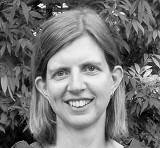
Home department at UCL: Division of Infection and Immunity
Start date: October 2021
Hepatitis B virus (HBV) is responsible for an estimated 290 million infections worldwide, and approaching 1 million deaths each year. In order to make progress towards ambitious global targets for the elimination of viral hepatitis as a public health threat by the year 2030, urgent action is required to improve HBV diagnosis, treatment and prevention. My group works to advance an understanding of the molecular mechanisms that drive liver disease in HBV infection, linking in vitro insights with real-world clinical cohorts to inform translational advances in clinical practice and public health. Close links to clinical teams at UCLH and the Royal Free Hospital offer opportunities for addressing new laboratory and translational questions through large clinical cohorts. We also have close partnerships with a clinical research team in Uganda and with several centres in South Africa – including the Africa Health Research Institute (AHRI) in Durban, providing opportunities to improve insights and develop enhanced care pathways in populations with a high prevalence of HBV infection and HBV/HIV co-infection. Collaborative enterprise at the Crick will enhance approaches to host and pathogen sequencing, immunology, cancer biology, structural biology and analysis of large population datasets.
- Dr Maxim Molodtsov

Home department at UCL: Physics and Astronomy
Eukaryotic cells multiply by duplicating their DNA and then dividing into two daughter cells. In order for genomes to pass correctly from one generation to the other, mitotic spindles made of slender fibril polymers called microtubules physically rearrange the DNA and ensures two copies of DNA are segregated correctly into newly formed cells. At the molecular level, rearrangements are driven by combination of motor and non-motor proteins that generate and respond to mechanical forces. However, how the action of multiple molecules is coordinated and integrated is not understood. Mutations and other factors that lead to disorganization cause disorders in development and disease. Our goal is to understand the fundamental principles underlying intracellular rearrangements and their physical mechanisms.
To achieve this, we are studying how mechanical forces are being generated and transduced at the microtubule tips and how proteins, such as cohesin, resist mechanical forces and rearrange DNA. Specifically, we will investigate:- How forces generated by microtubule tips are transduced by TIP binding proteins;
- What is the role of microtubule tip generated forces in maintaining the mitotic spindle structure;
- How DNA-DNA interactions resist forces generated by the mitotic spindle.
Our understanding of how forces are integrated in live cells is currently limited by the progress in physical tools available to interrogate force generating and sensing mechanisms in live cells. Therefore, we are currently investigating new approaches for manipulating objects in live cells and applying forces to specific molecules.
- Dr Zena Hadjivasiliou
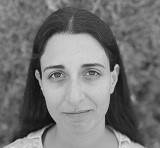
Home department at UCL: London Centre for Nanotechnology
Start date: September 2021
We use the laws of physics and the language of mathematics to understand the principles of self-organisation in biological systems.
Our lab studies how structure and organisation emerge in living systems. We develop mathematical and physical descriptions that help us bridge events that happen at the molecular, cellular, tissue, and whole organism scale. We then use analytical, numerical and computational tools to link our theoretical descriptions to experimental predictions and observations.
One of our core interests is the process of development where organisms grow from a single cell to an adult body of well-defined and reproducible size, shape and morphology. We study the developmental machineries that underlie this remarkable transformation in size and organisation.
Understanding the mechanisms that control animal growth and patterning can also help explain how the enormous diversity we see across the tree of life has emerged. To do this, our lab examines how developmental machineries mutate and evolve to yield changes and novelty in animal morphology.
We like to work with experimental collaborators to identify new areas of study and test the predictions of our theoretical work.
 Close
Close


